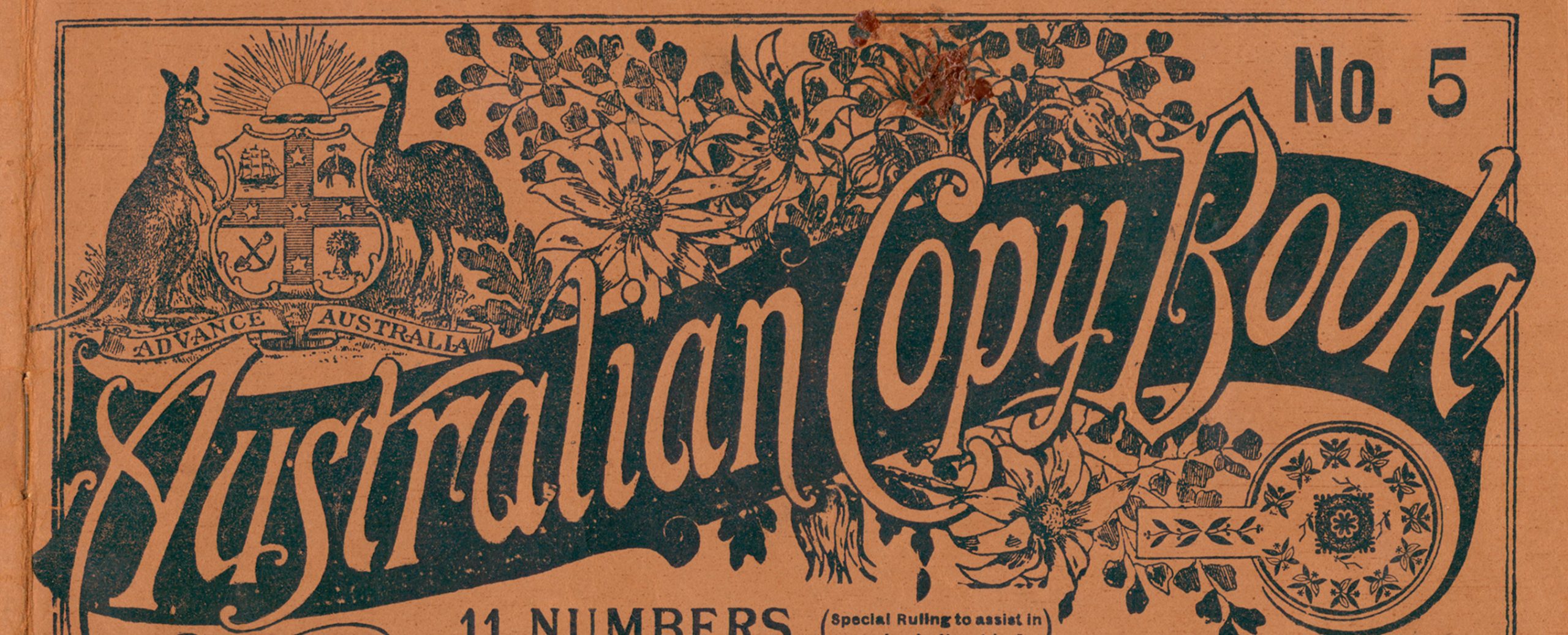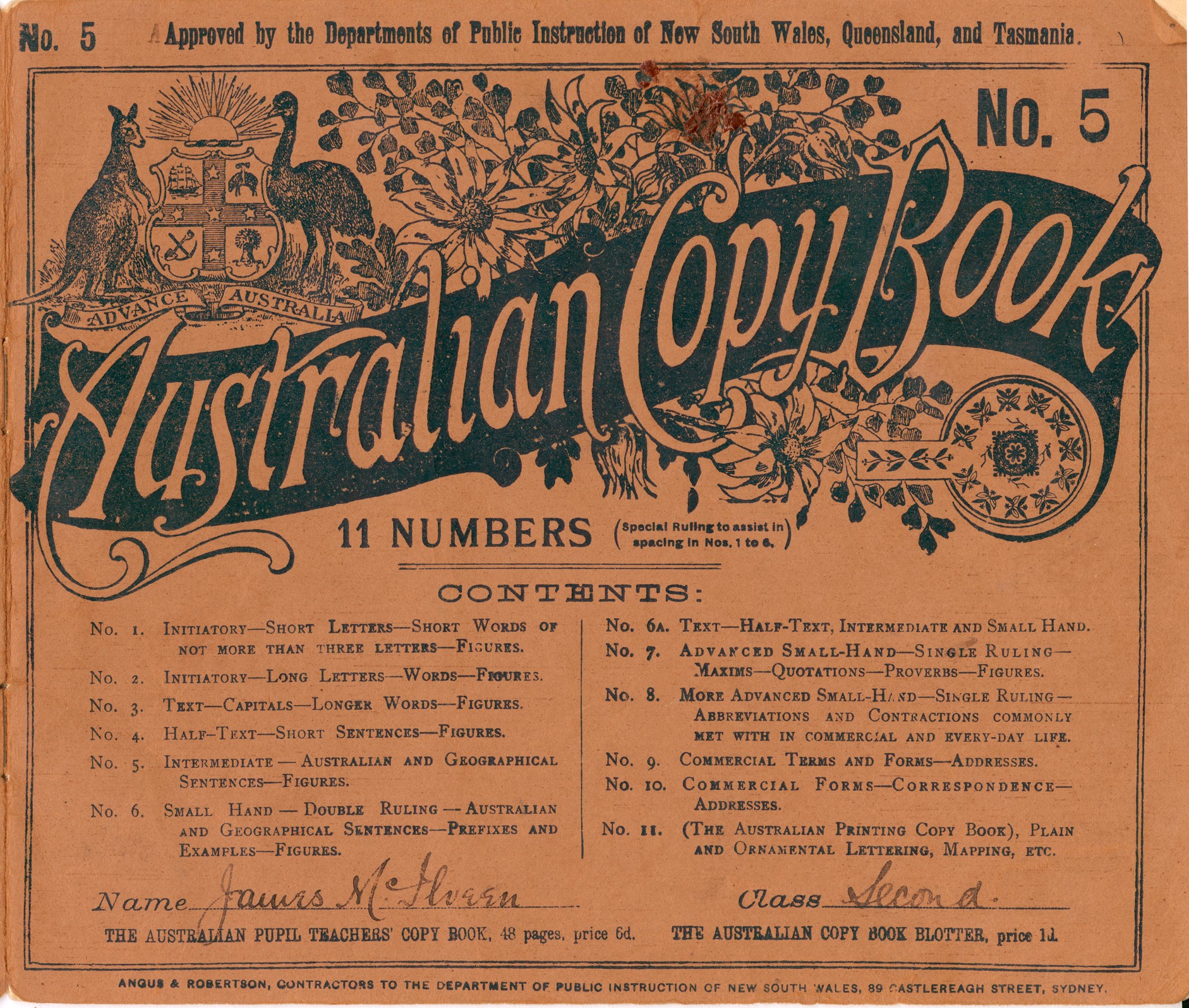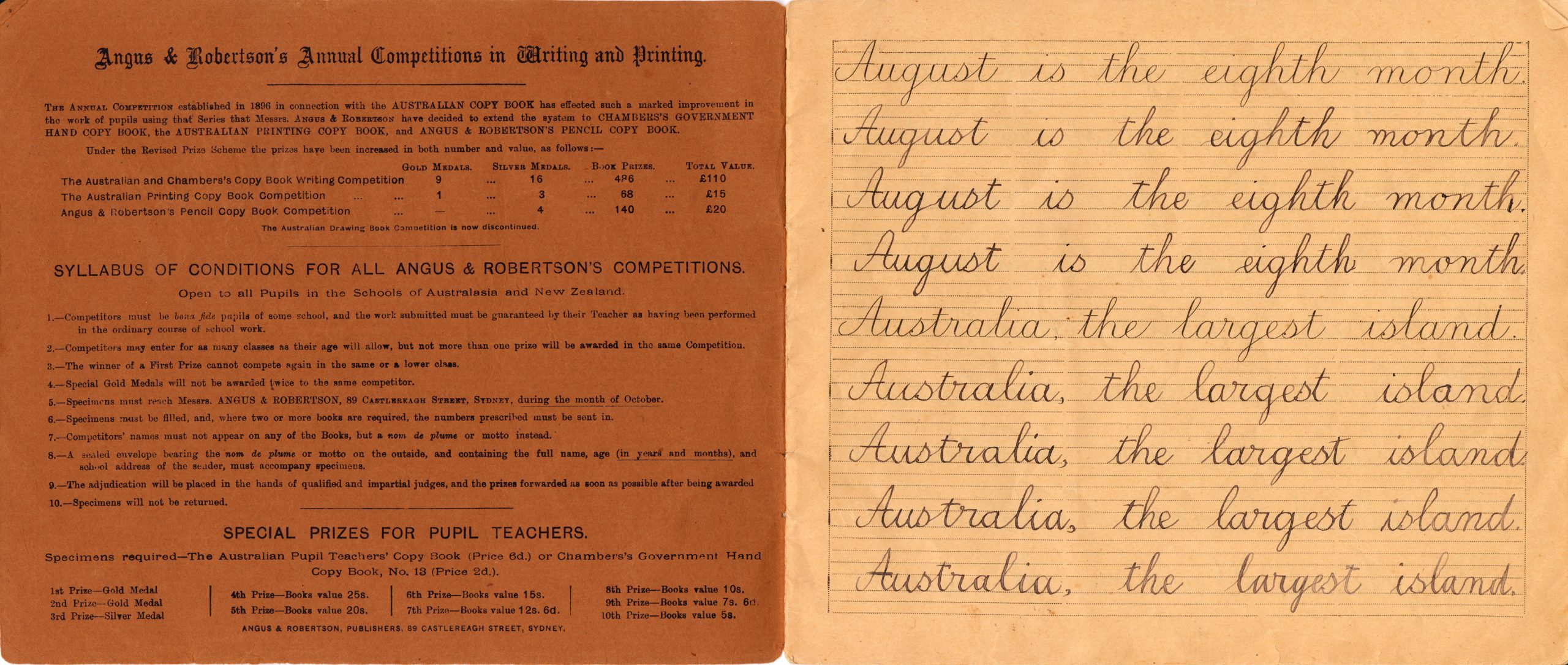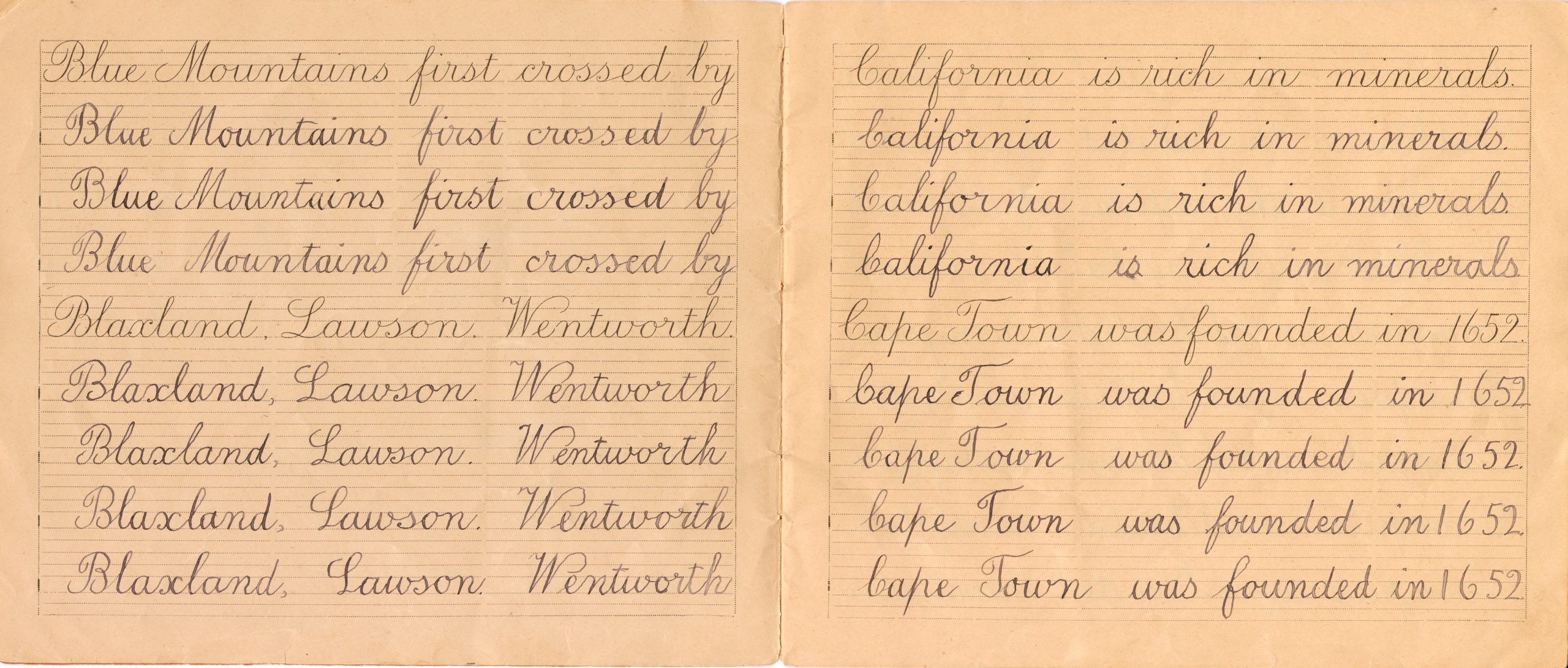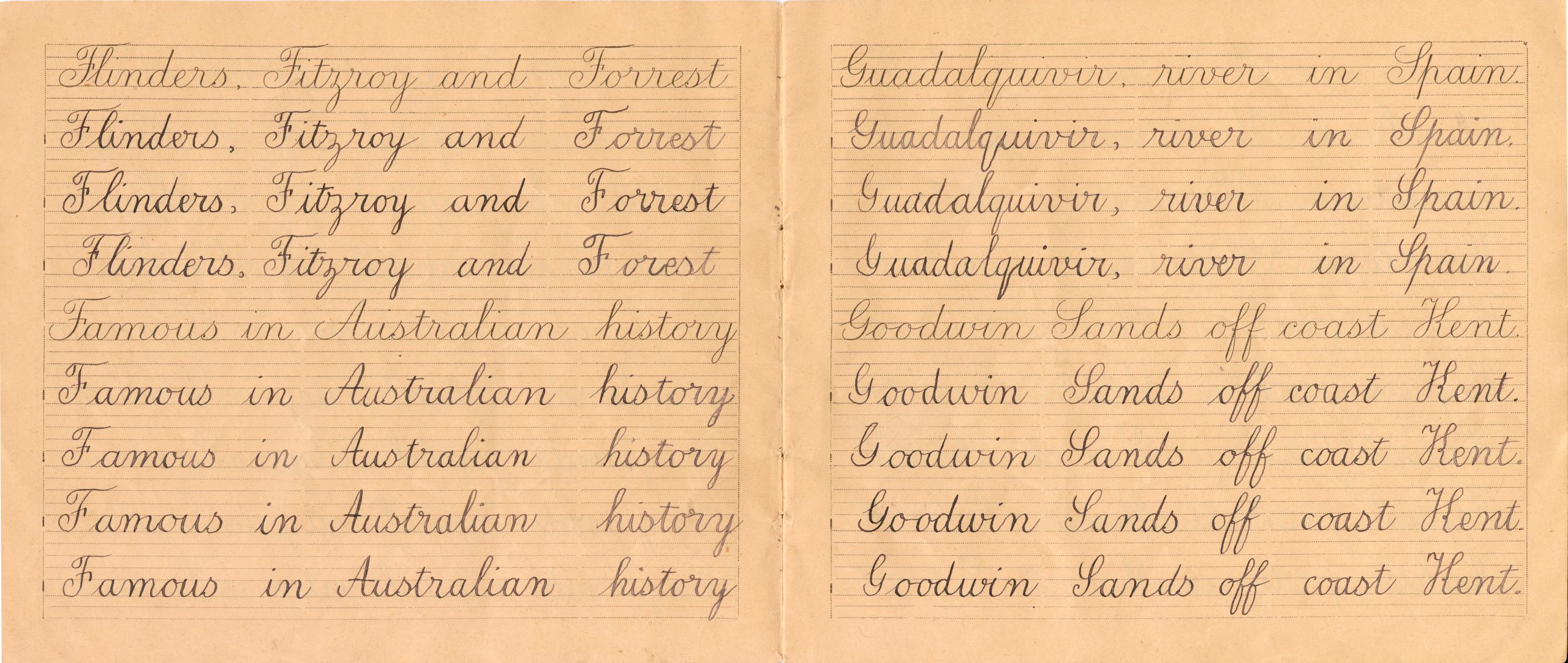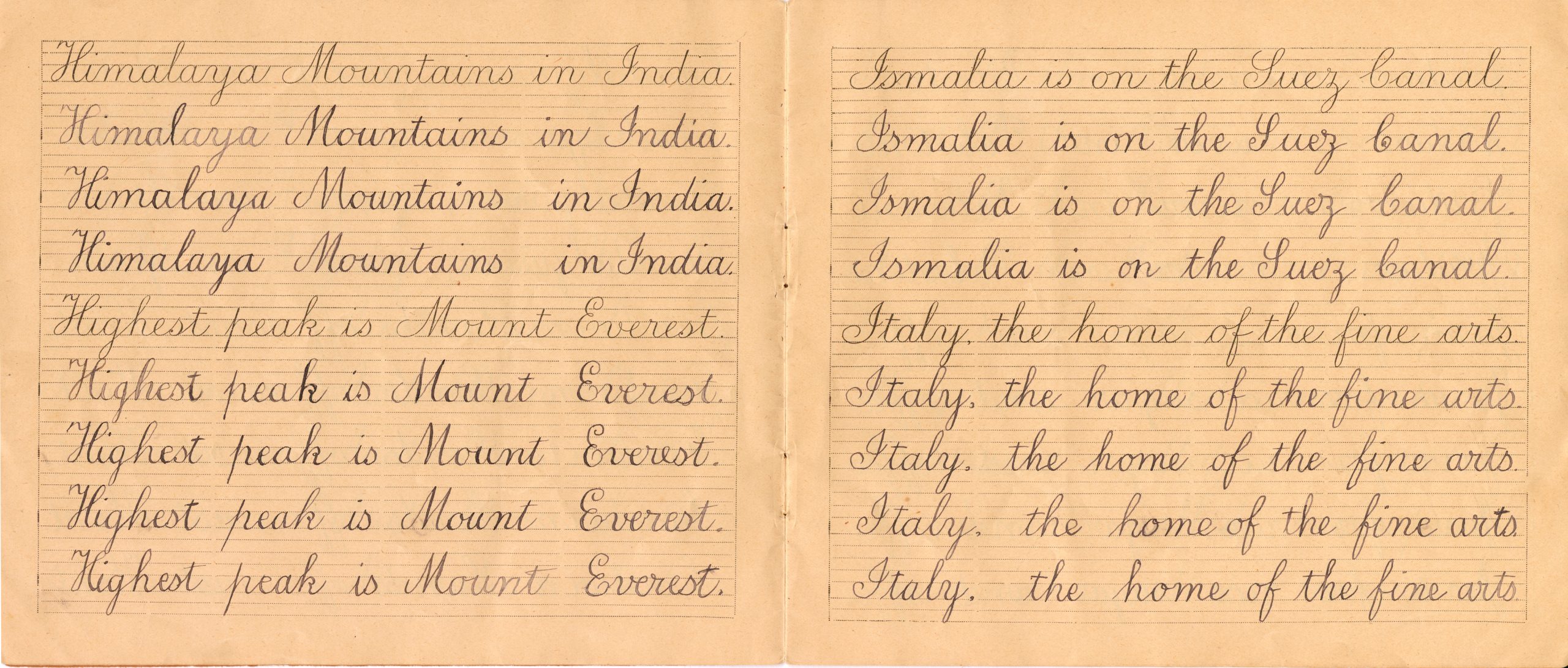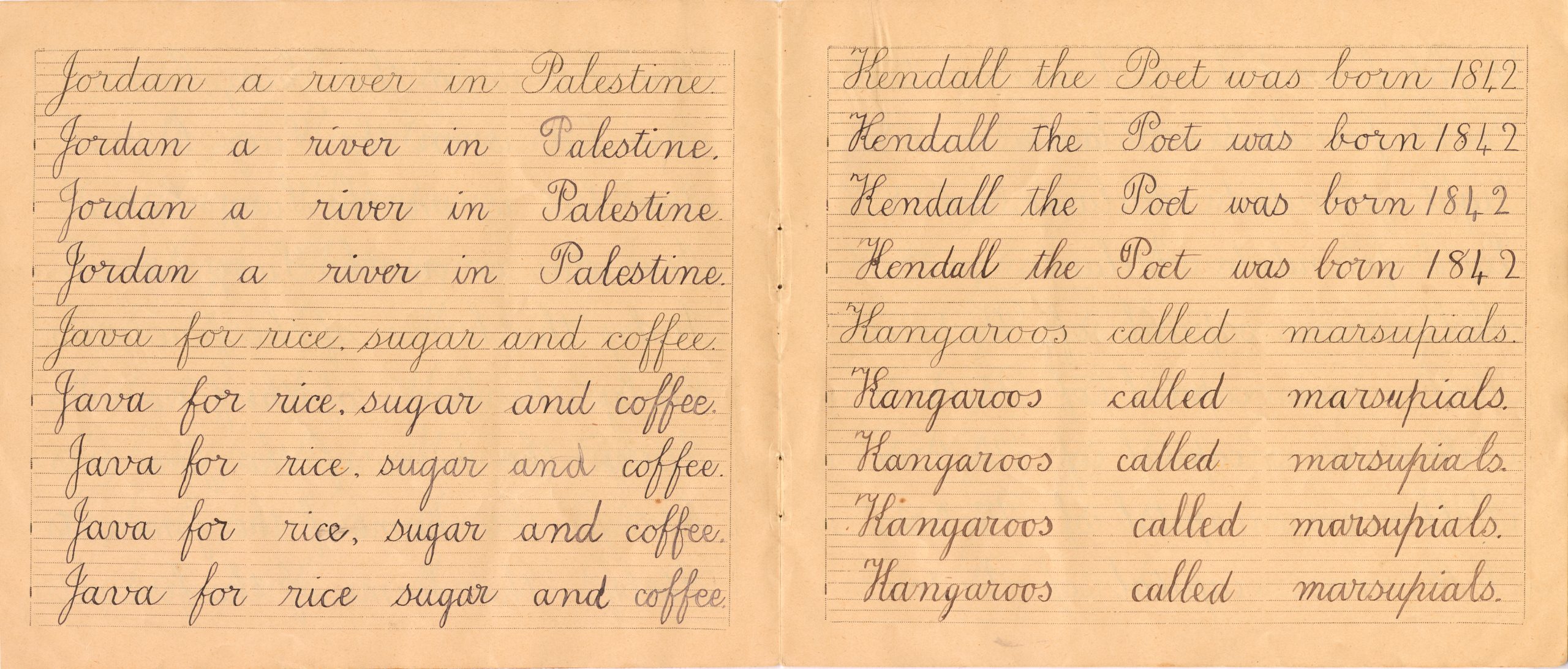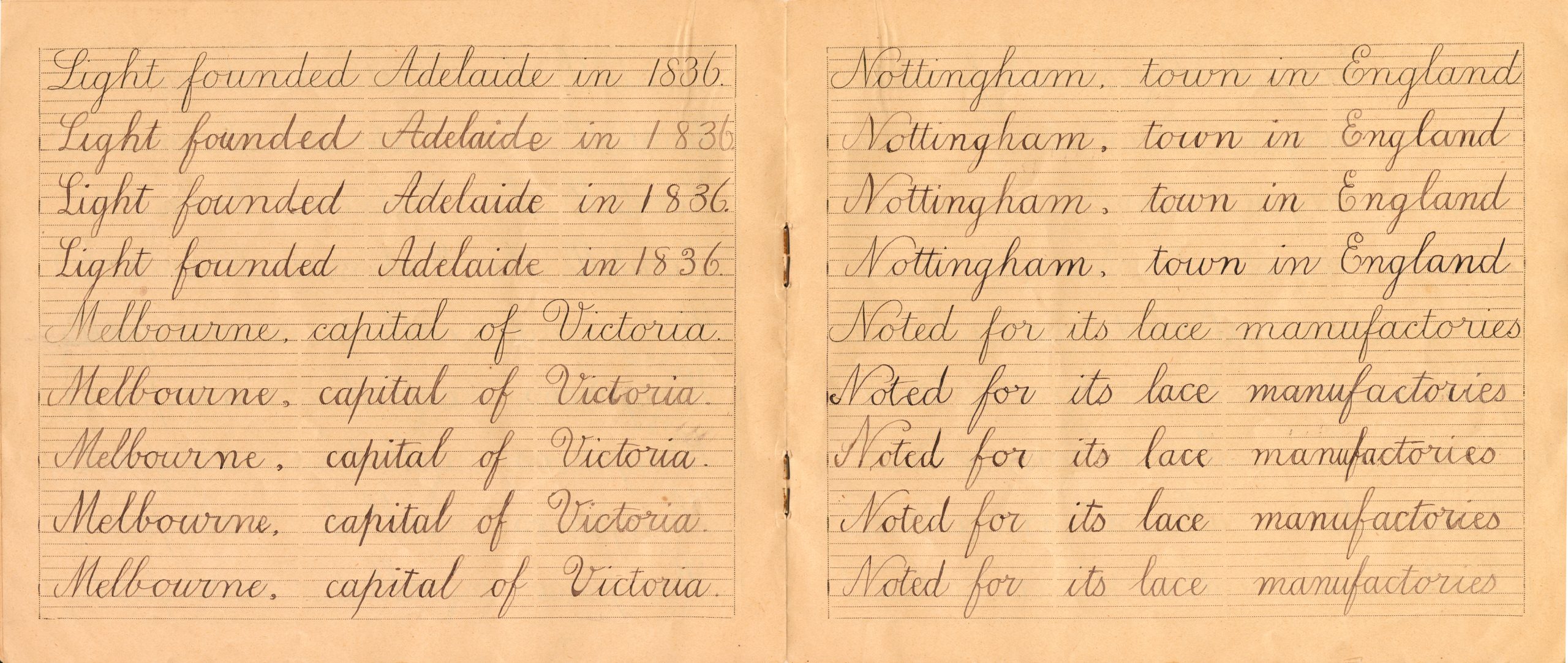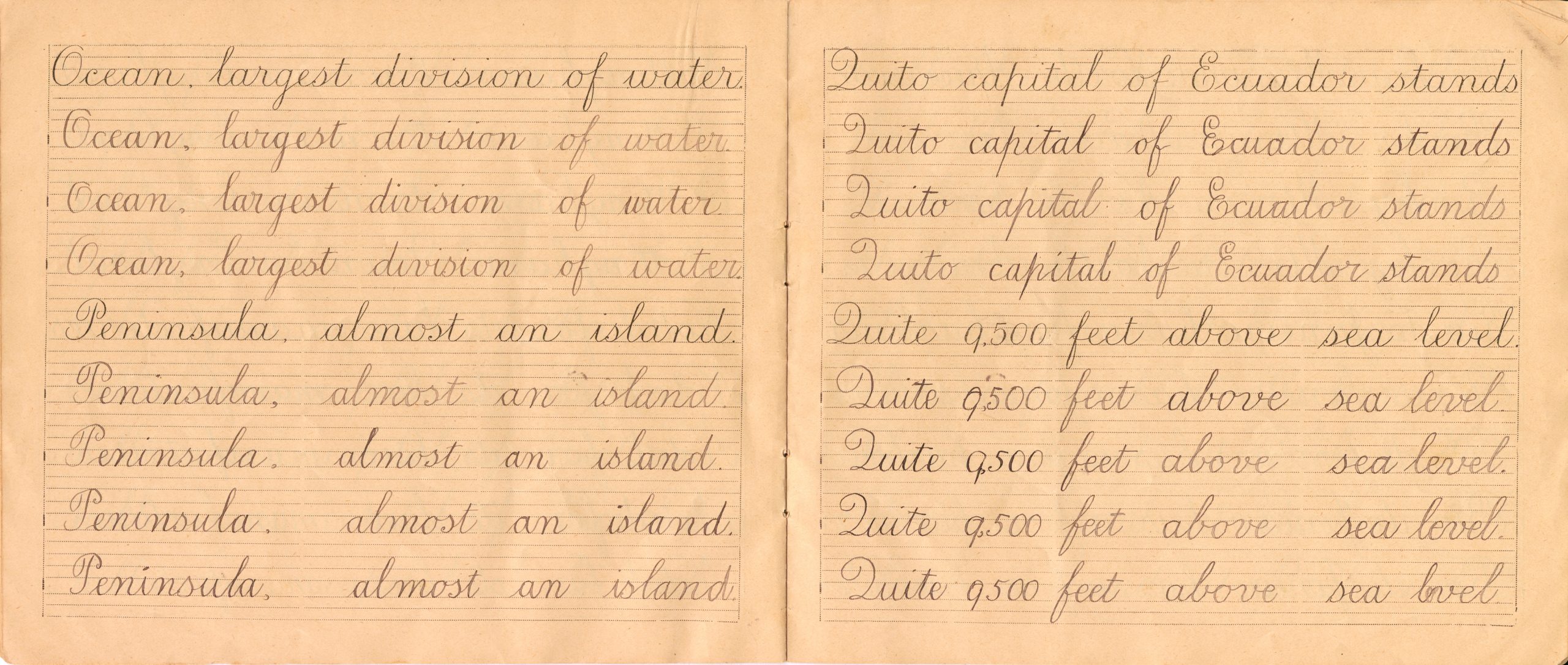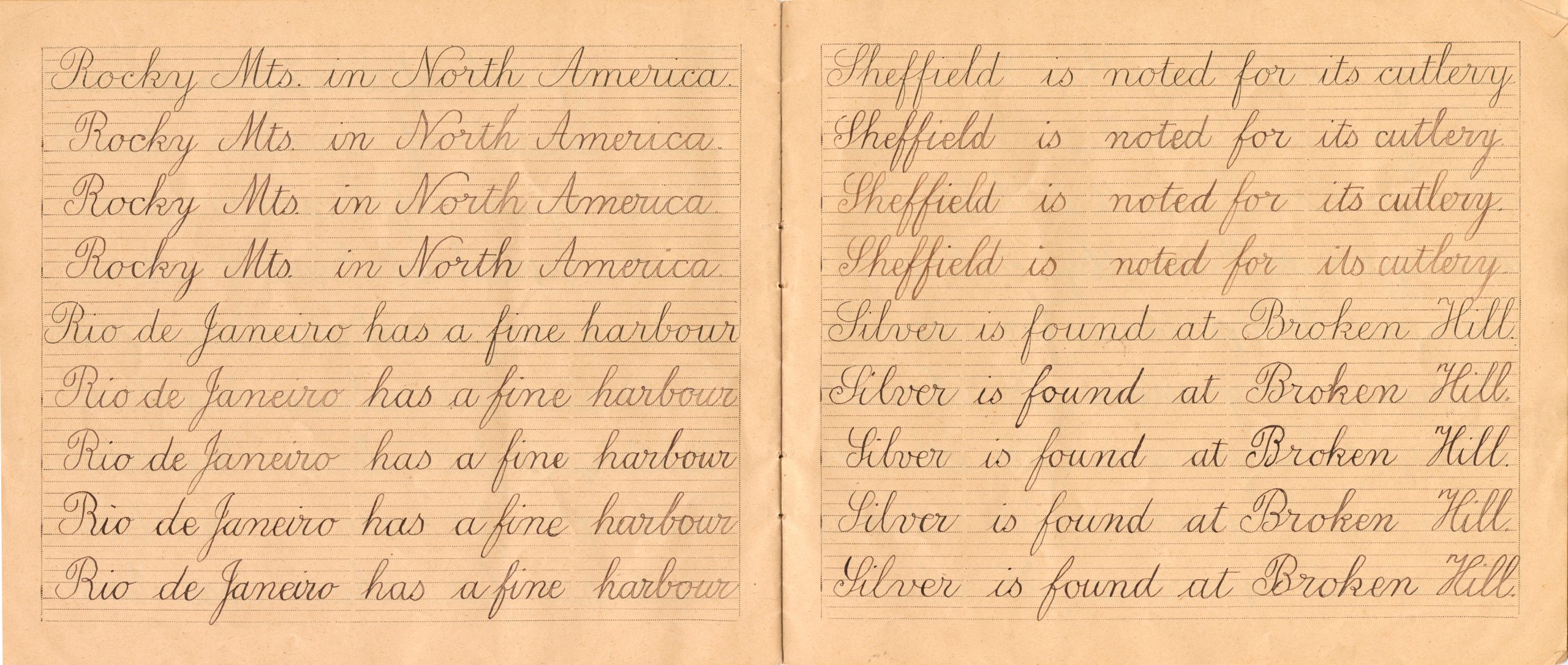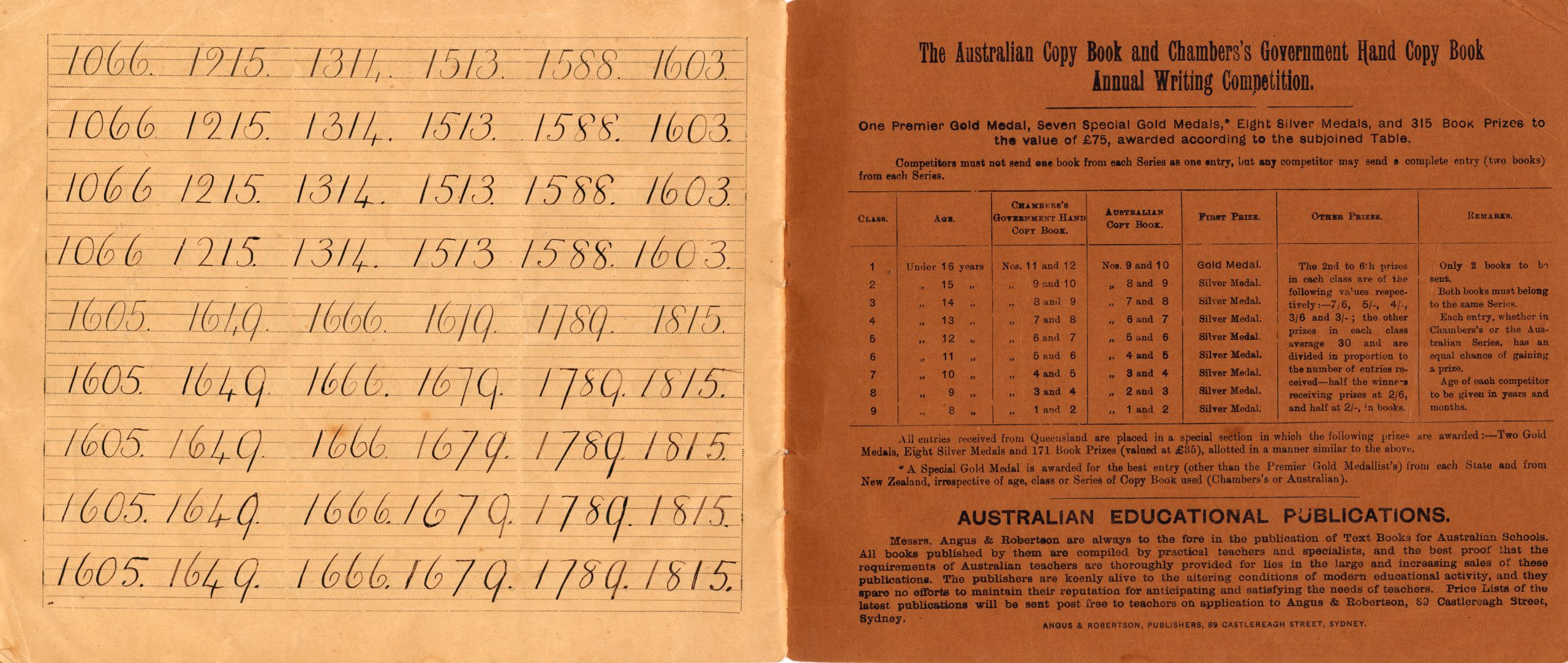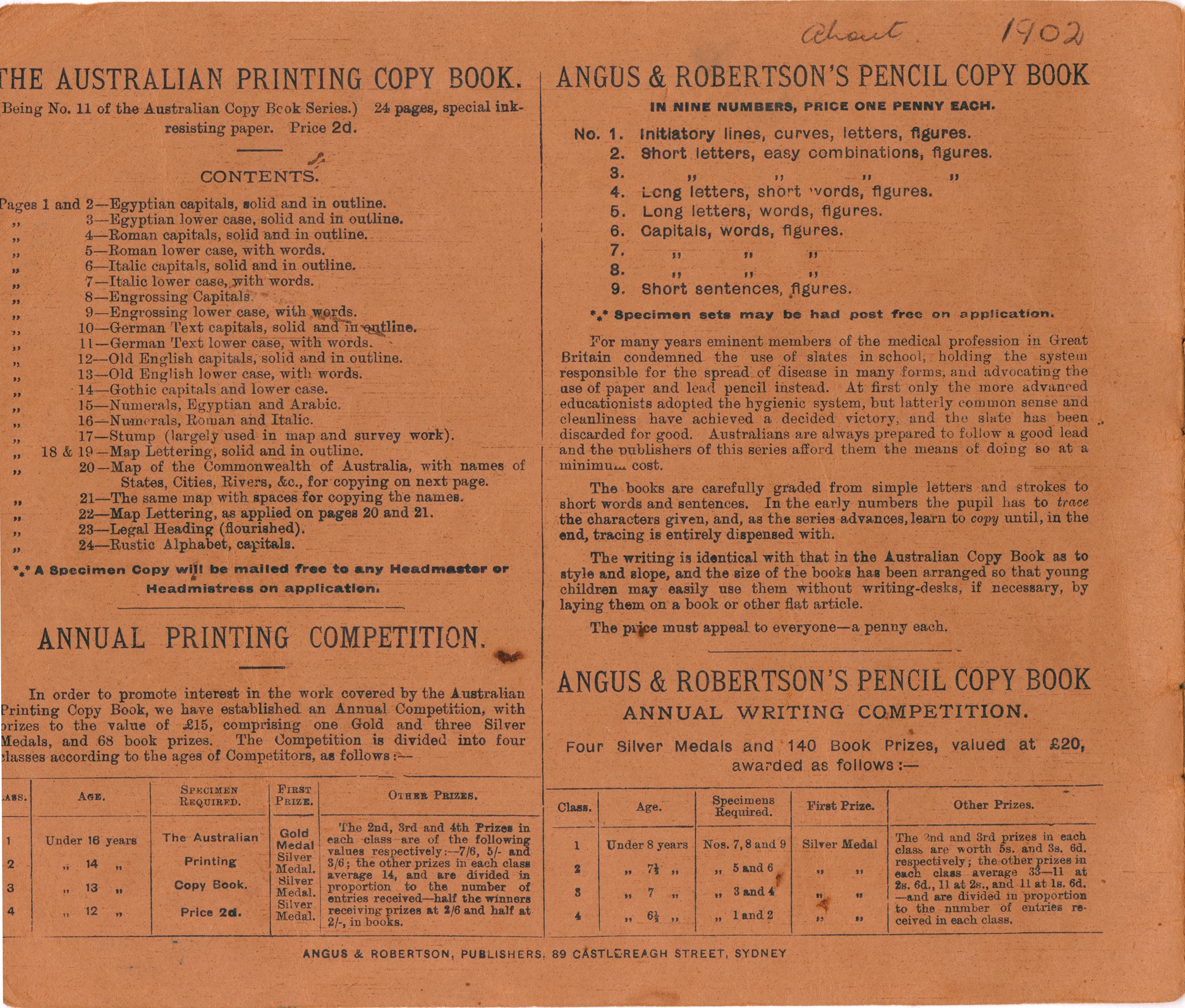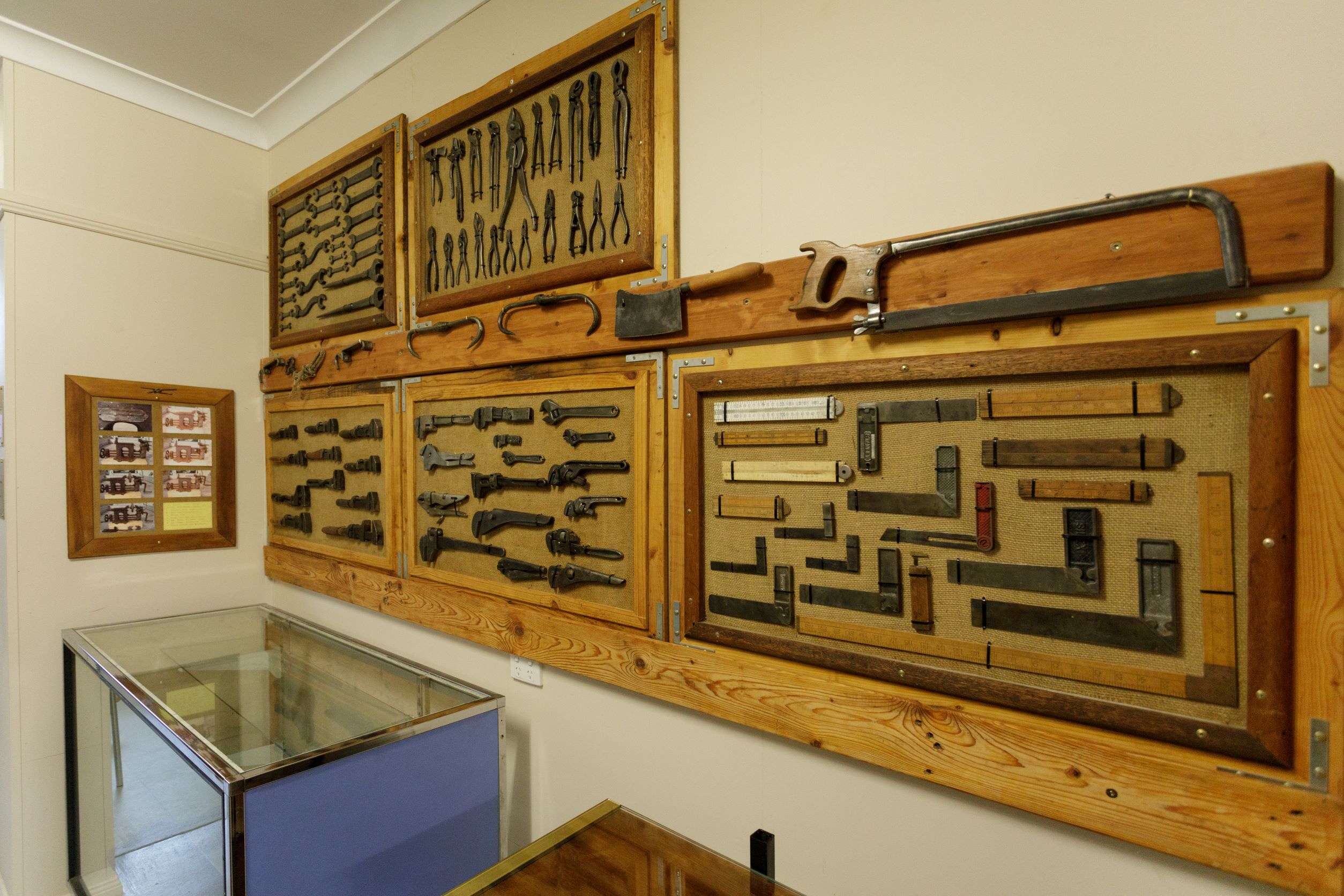Guadalquivir, Guadalquivir, Guadalquivir
Practice Makes Perfect Handwriting
Published by Angus and Robertson, this ‘Australian Copy Book’ was the fifth in a series of eleven, all aimed at training the hands of young Australians in good penmanship. The ability to write quickly and neatly in a ‘fair hand’ was a valuable asset in the labour market for office and bank workers.
Phrases like ‘Australia is the largest Island’ and ‘Guadalquivir, river in Spain’ are repeated to train the hand. Students were encouraged to do their best through a system of awards and prizes that recognised good handwriting.
This copy book features the careful handwriting of James McIlveen, a student in second class at Moonbi Public School, near Tamworth, around 1902. He was the son of William and Elizabeth McIlveen, who ran the Moonbi post office, and the second-youngest of their nine children.
School children exhibited their unblotted copybooks and perfectly punctuated sentences in church fairs and regional shows across the state, alongside samples of needlework, paper cutting, and drawing. In 1902, young Clifton Hardaker of the Armidale Superior Public School (100kms north of Moonbi) achieved modest fame when, for the third year in a row, he won the Angus and Robertson annual writing competition.
While James’ neat copybook displays patience and diligence, it did not lead to similar accolades nor a career in a bank or office. Upon finishing school, he became a farm labourer.
In 1916. he would leave labouring to enlist as a private with the 36th Infantry Battalion. A year later, James became ill while serving in Belgium. He was transferred to an army hospital in France where his health worsened. At just twenty-two years old, he died of a cerebral haemorrhage.
Though his body was buried in French soil, he is commemorated by a marble memorial tablet dedicated to him in the Tamworth City Uniting Church. Now this copy book becomes an unexpected way to remember him again.


